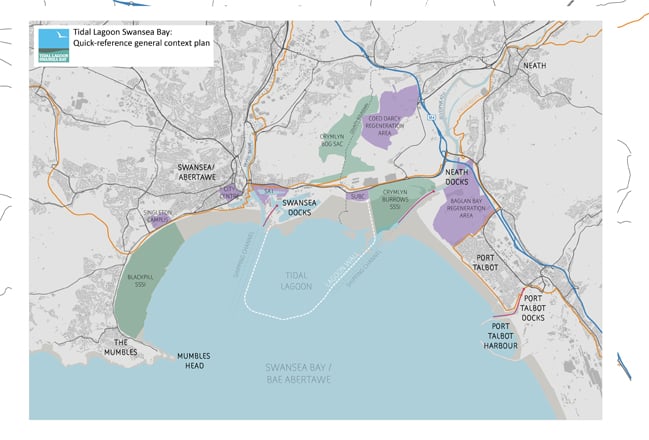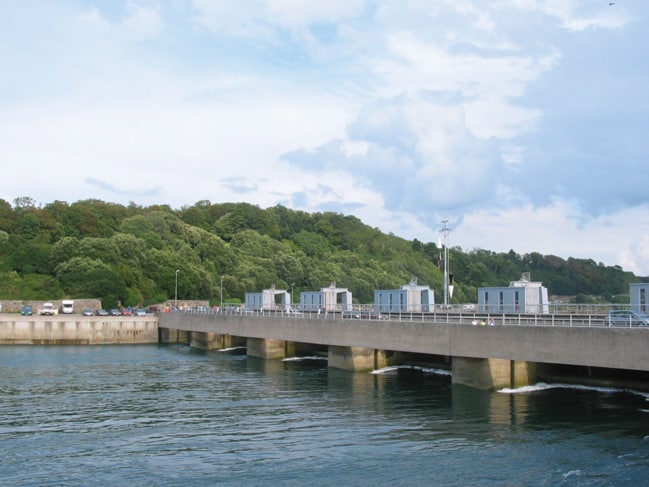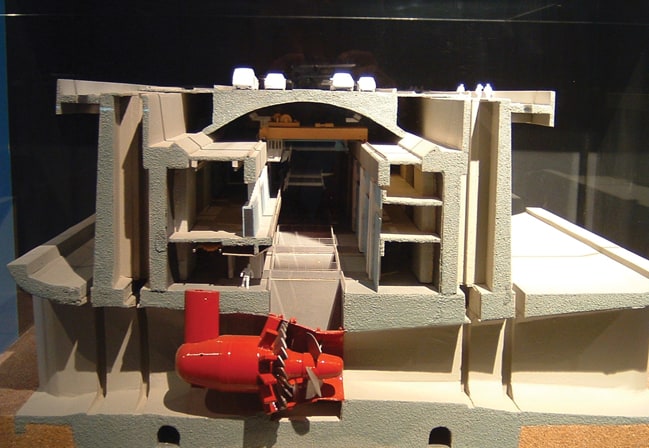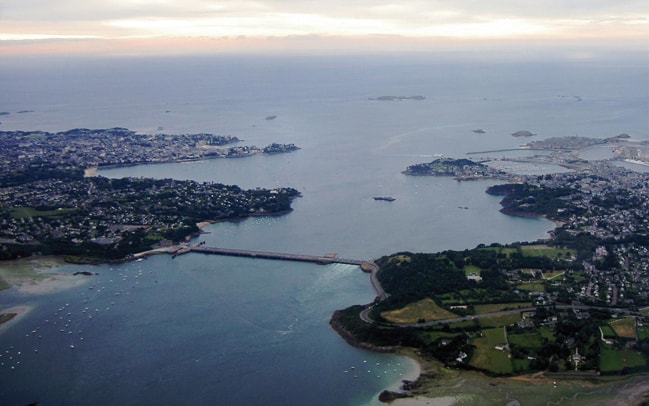In recent years, much of the development of tidal energy has focused on turbines that sit directly in the tidal flow in regions where the tides are strong and fast. But this was not the first way in which tides were used for energy in Britain. On the coast of East Anglia, in Orkney and in the Hebrides are the remains of tidal mills, where lagoons were created to trap the tidal water as it came in and then used the outflow to grind grain; some of these date back to the Vikings and even before. Now, this technique is under investigation again, as part of an ambitious project to generate tidal energy in Swansea, Somerset and Cumbria. We asked readers of The Engineer for their questions about these schemes, and Ton Fijen (TF), technical director of Swansea Tidal Energy, the company developing these concepts, answered them.

What types of engineers are involved in this type of project? As a civil engineering student, I’m curious to know if I would be able to get involved with projects such as this in the future.
TF: A project such as the Swansea Bay Tidal Lagoon covers all the engineering disciplines: electrical, mechanical, coastal, marine, civil, structural and geotechnical. We’ll need between 30 and 40 people to monitor the construction process and progress.
At the moment, we are actively recruiting engineers to assist with the design development work for other tidal lagoon projects, both experienced and young engineers.
Have you considered placing wind turbines on the lagoon walls as the infrastructure is in place for the power distribution?
TF: That may seem to be an obvious thing to do, but we quickly recognised that tidal lagoons present a unique range of non-energy opportunities to bring people closer to the power generation sector. That has been a central design feature while establishing a viable and scalable blueprint for the tidal lagoon industry.

The best measure of the effectiveness of an energy source, apart from cost of energy, which is dependent on many peripheral factors, is capacity factor (CF), i.e. the proportion of time on average that the source is running at its design rating. For the best offshore wind energy sites, this can be 35–40 per cent, and for the best tidal stream sites even more. Tidal head systems, which includes lagoons, tend to have very low capacity factors – typically 10 per cent or so. I would be interested to know if anyone can quote higher CFs for tidal lagoon energy. If not, should we invest instead in offshore wind and tidal stream energy?
TF: CFs are a measure of energy output as a percentage of maximum possible output and for existing renewables provide an effective measure of intermittency of the power source, i.e. they are a measure of the available natural resource rather than a measure of the efficiency of the power plant. For wind and solar projects, the CF remains unchanged regardless of the number of generating units (number of wind turbines, for example).
For tidal lagoons, CF is more complicated as there is not an underlying linear relationship with the number of generating units and as the resource is finite, i.e. dependent on the size of the basin and the tidal range.
By adding more turbines, you can reduce the CF but increase the efficiency of the lagoon and improve the economic viability. Furthermore, the optimisation of the generating and sluicing units within the lagoon relies upon the fact there is full predictability of the tides and therefore energy production – factors that other renewables are unable to replicate, notwithstanding higher raw unadjusted CFs.
We consider that for these reasons, it is not possible to directly compare CFs for other forms of generation with those of tidal lagoons in a meaningful way, as it would not be providing a like-for-like comparison.
In terms of the efficiency, Tidal Lagoon Swansea Bay will be extracting close to 60 per cent of the available potential energy, or energy resource, which is termed the Emax. This will make it by far the most efficient tidal plant in the world.

Has a dual lagoon system been considered for any of the sites? In addition to storing the energy until peak demand, it would also allow ‘pumping’ at low tide, as well as at high tide as per a single lagoon. But of course the extra lagoon adds cost to build.
TF: That could be an option for larger lagoons but is largely dependent on the energy market and the value associated with generating continual power. In our case, we are focused on maximising the energy yield of each lagoon; by creating a multi-basin scheme it would dramatically increase costs while reducing overall energy yield.
However, if we have a portfolio of lagoons, geographically separated with a reasonable phase shift in tides, we could have a centralised, intelligent, forecasting, trading and dispatch system that could produce continual generation as a balanced portfolio and in effect create a virtual multi-basin scheme. Similar systems are already used on large run-of-river hydropower cascades such as on the Rhone and the Rhine, where multiple hydro schemes are operated as a single system. With a portfolio of lagoons, this could be achieved by slightly adjusting the pumping, generating and dispatch times of each lagoon to create continual 24-hour generation from the system as a whole.
Capacity, cost of grid connection and distribution would probably make lagoons more attractive than tidal stream, along with ease of maintenance. There must be some big advantages in lagoons, even if power generated will only support community. However, why has the interest shifted from tidal stream?
TF: I’m not sure that interest has shifted from tidal stream and I believe that the UK should invest in a diverse range of low-carbon technologies.
Tidal lagoons bring another option to the table. With the concept proved through the Swansea Bay project, tidal lagoons can be built at a larger scale, providing a significant percentage of electricity generation at an economically attractive rate.

Would it be sensible for the government to contribute to funding the installation of a small-scale prototype single- or twin-turbine incoming/outgoing tide system first?
TF: The Swansea Bay Tidal Lagoon provides a scalable blueprint, not just to prove the effectiveness of tidal head generation using bidirectional turbines but also to prove the efficiency of our designs, methodologies and construction practices. The project has also mobilised funders and a British supply chain that can scale as the sector scales. The UK can establish a whole new industry on the back of the Swansea Bay project.
How can you prevent tidal lagoon schemes from changing the inter-tidal regions that are key habitats for many threatened wildlife species?
TF: The bidirectional turbines designed specifically for Swansea Bay have very high efficiencies and, together with the ability for pumping, will ensure that the tidal water level variability inside the lagoon is almost identical to the natural variability. This will help to ensure that the effect on inter-tidal habitat will be minimal.
We will address up front the more complex issues arising with lagoon developments in environmentally sensitive areas. Indeed, we are under way with a comprehensive programme of baseline surveys and modelling to assess potential effects associated with construction, operation and decommission. Turbines and project design will be iterated to minimise impact.
How can the turbine blades be kept free from barnacles and other marine growth that could reduce their efficiency?
TF: This is a good question. We do expect some marine fouling but due to the four-quadrant operation of the turbines (bidirectional turbines and pumping) the standstill periods when bio-fouling tends to occur are relatively short and so effect on efficiency should be minimal. However, we have factored in regular cleaning downtime into our operations and maintenance strategy and improved the design of access into the dewatered turbines to allow for larger equipment to be used in cleaning.
Tidal power can provide baseload, but it would be many times more valuable as dispatchable electricity from stored hydro energy. Before-generator energy storage is by far the cheapest option, calculated on a whole-system basis. What’s the panel’s opinion on this?
TF: Conventional pump storage schemes are very effective, and there will always be a need for such projects. By pumping, tidal lagoons can, in effect, be storing hydro energy and the dispatch time can be manipulated slightly. However, we still have to operate around the tides and therefore we cannot operate as a true pumped storage scheme — although if we were to operate a portfolio of lagoons (as described previously) it does present a greater opportunity for energy storage.
Is silt build-up a problem with the proposed installations, and if so how could it be overcome?
TF: Silt build-up is an issue that has been subject to detailed and thorough investigation as part of our environmental impact assessment (EIA) work and engineering studies. It should be noted that unlike previously proposed tidal range schemes we will be operating across four quadrants (bidirectional turbining and pumping), which means that standstill periods when sediment can settle out are kept to a minimum and will be on average less than two hours. In addition, due to the residual momentum of the water within the lagoon, even during hold periods, there will always be some circulation. It is inevitable, however, that there will be sediment accretion, but designs have sought to minimise its impact and over the longer term it will be managed with maintenance dredging to maintain the water depths and tidal exchange volumes.




Glasgow trial explores AR cues for autonomous road safety
They've ploughed into a few vulnerable road users in the past. Making that less likely will make it spectacularly easy to stop the traffic for...